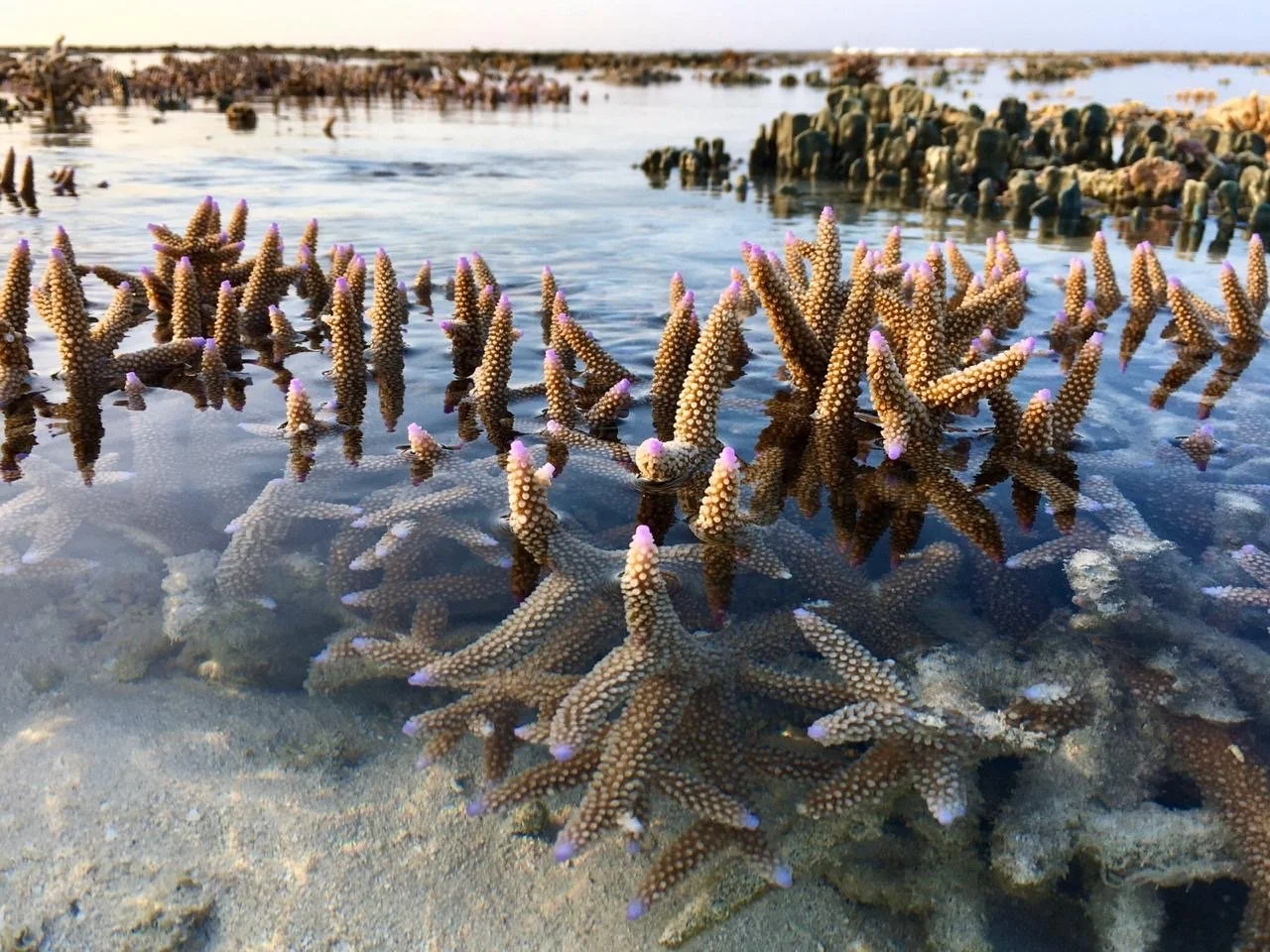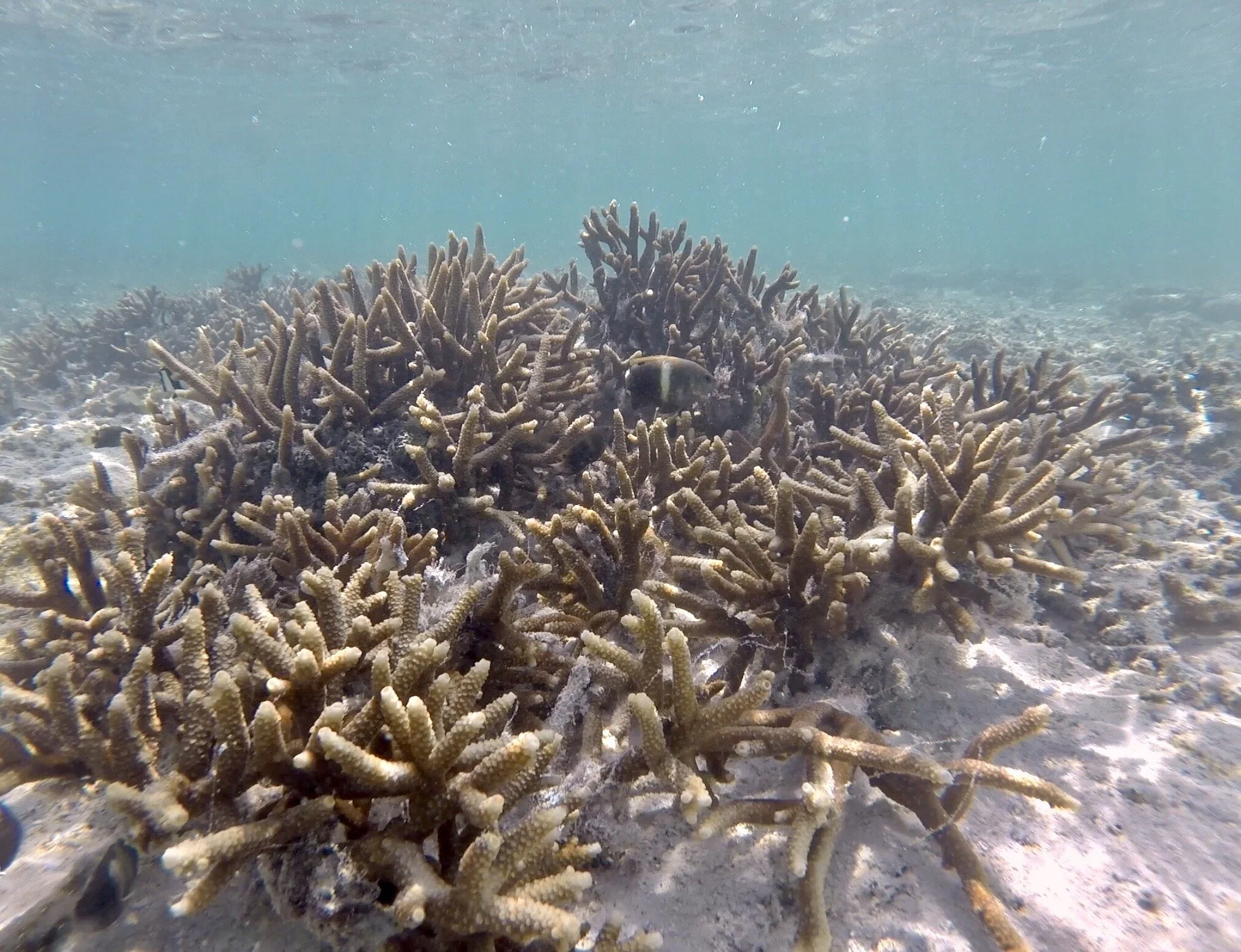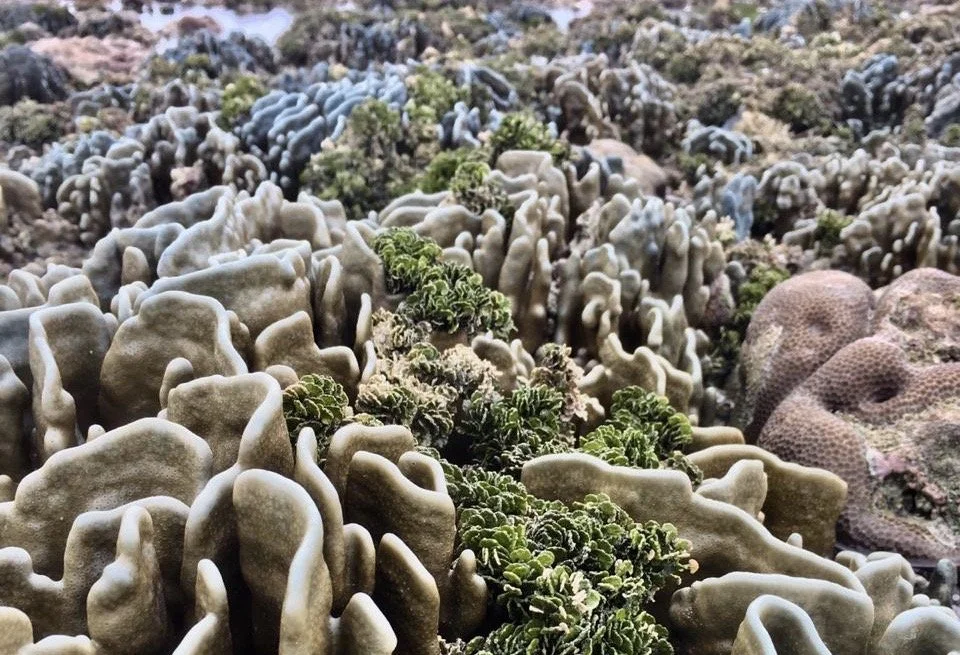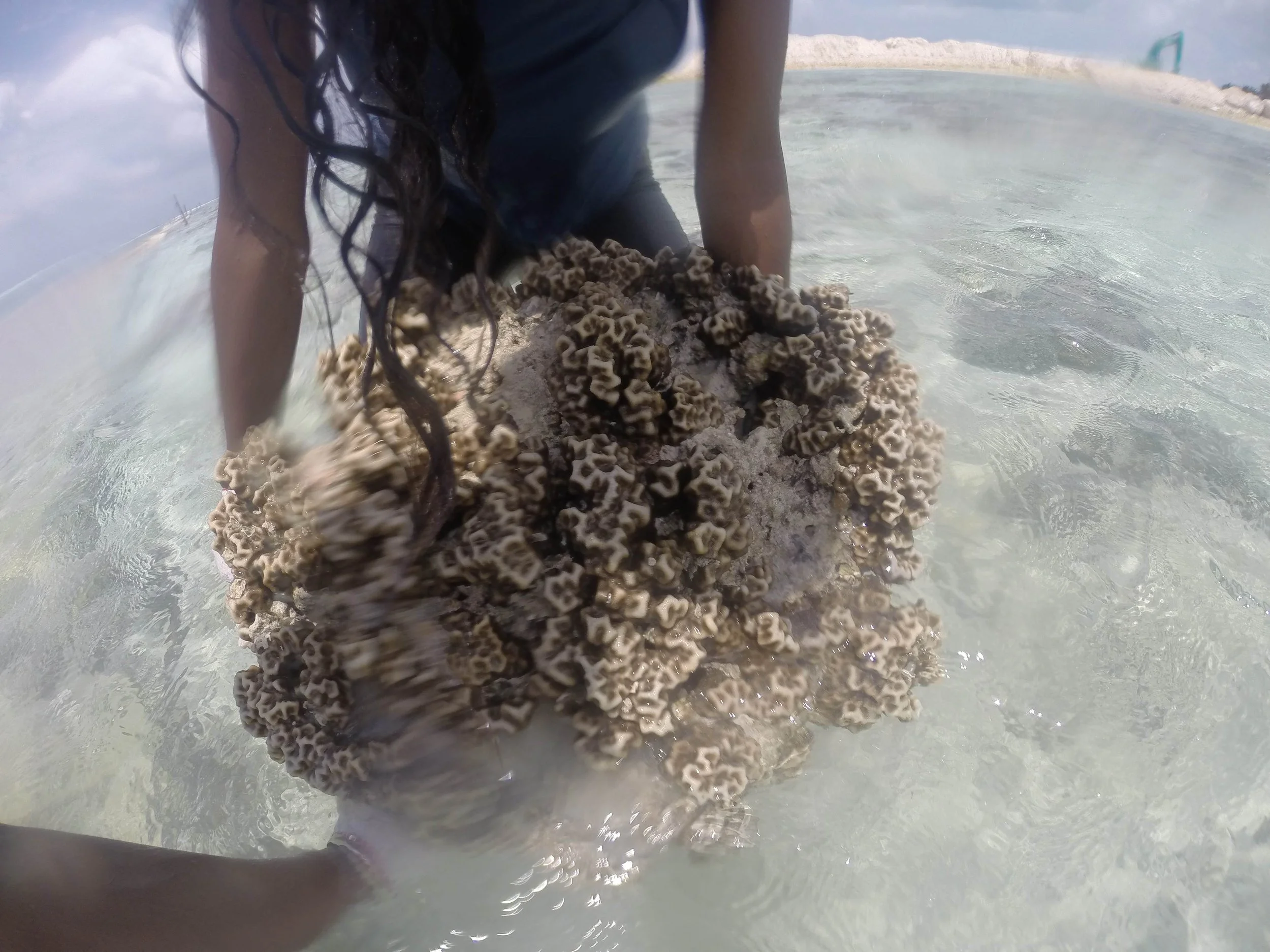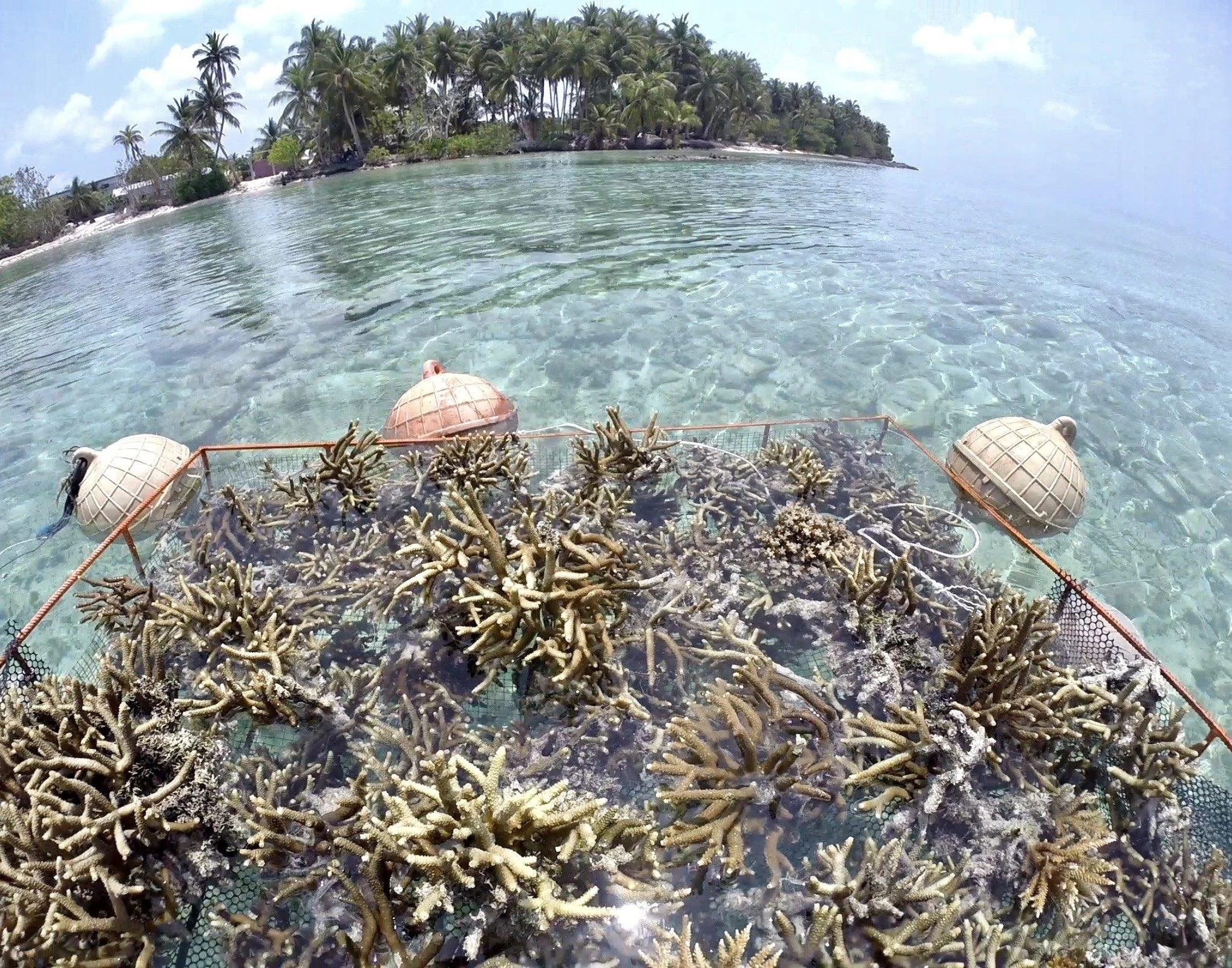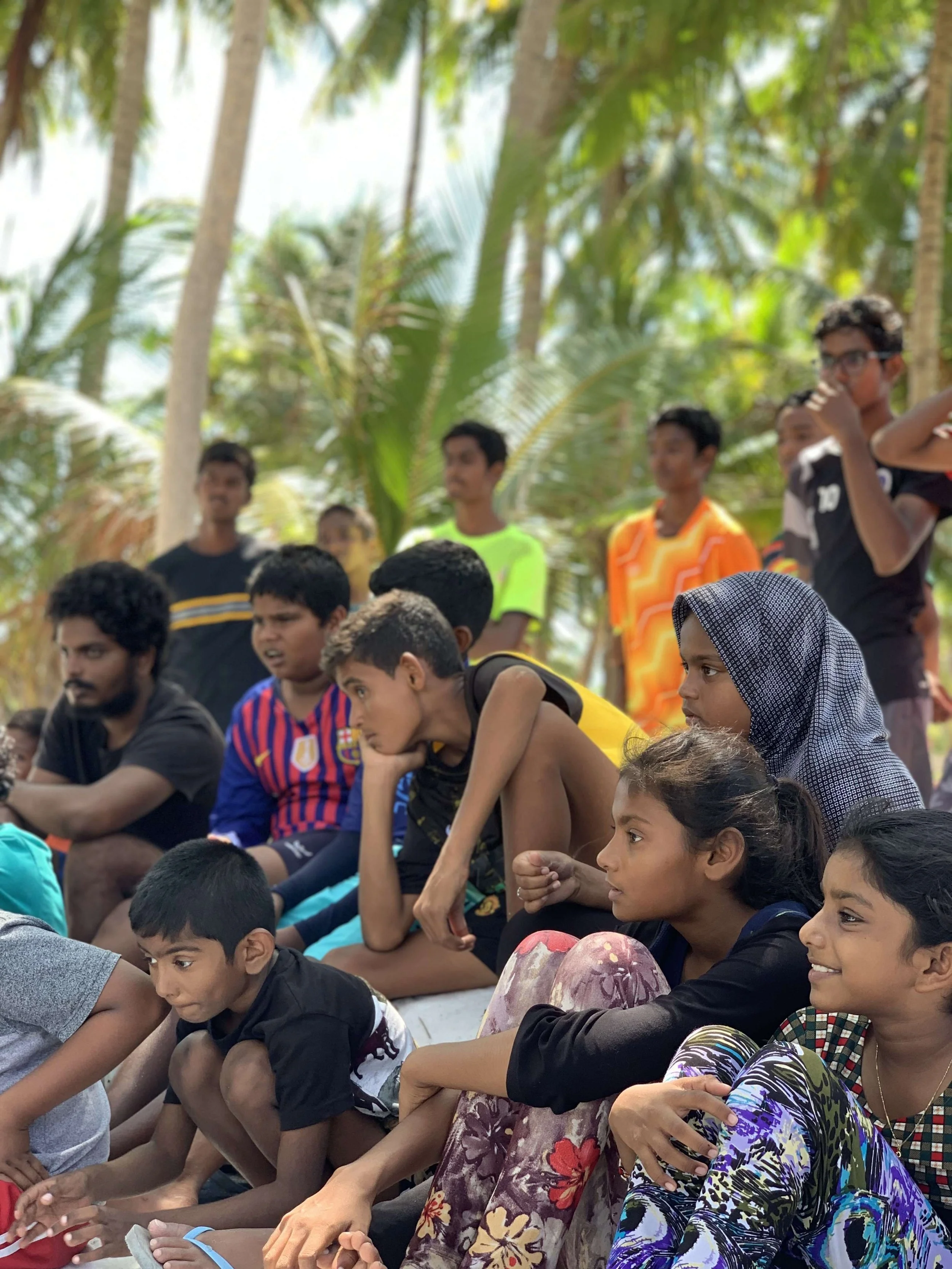Local community members of all ages from around Goidhoo Atoll joined in to help protect and preserve the health of Fulhadhoo’s invaluable resource of resilient corals from the effects of harbour construction work. We installed 100 meters of silt screen in 3 days, relocated 5022 coral colonies, and recorded 97 different living species of coral on Fulhadhoo’s spectacular reef.
We are grateful to Virgin Unite for supporting this project and to MTCC PLC. for providing materials and equipment. A huge thank you also to Hussein Didi and Amjad for the many ways they helped us during this project.
Silt Screen preparation and installation
Preparing and installing a silt screen large enough to screen the corals from major construction activities was a big job, and the conditions got a bit rough, but with everyone pulling together we prepared and installed 100 meters of silt screen in just three days. We are thankful to everyone who sewed, built, carried, hammered, pushed, danced, sang, swam, and made the installation a very fun (and efficient) community project!
The atoll community and children found out first hand about protecting their island and their corals, and learnt some hard coral science and biology! We made presentations and showed the community in images and video what was happening to their corals. We talked about reef ecologies and coral biology, and how to protect and mitigate damage to corals.
Relocating corals
We started coral relocation work in Fulhadhoo just as the Covid-19 emergency began in Maldives. Our plans to work with the community were put on hold for safety, but as harbour development work continued, the relocation work remained urgent. With Hassan Beybe from Save The Beach Maldives, MCI’s Aya Naseem worked in a team of two to move as many colonies of coral as quickly as possible. When relocating the corals we tried to recreate the natural spatial configuration of the corals as much as possible, taking into consideration same-species patch size, shape, density, and how different species of coral were naturally growing in relation to each other.
Protecting Fulhadhoo Reef
Unlike the majority of reefs around the world, Fulhadhoo’s coral survived the marine heatwaves of the last few decades suggesting a higher level of resistance to rising temperatures. Though Fulhadhoo’s reefs have shown resilience in recent mass bleaching events, the added stress of sedimentation from harbour development work will likely make them more vulnerable and compromise their ability to recover. Unfortunately most corals died due to sedimentation caused by harbour construction, despite our efforts at damage mitigation, the silt screen was damaged in a storm and not observed for too long due to pandemic restrictions.
Moving from mitigation to restoration we are now working to restore Fulhadhoo reef. Please read more on our Fulhadhoo Coral Restoration Project page.
